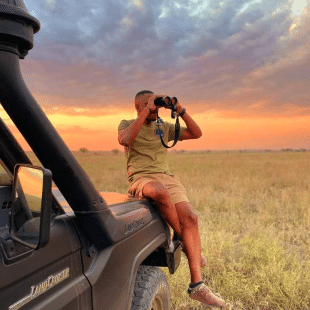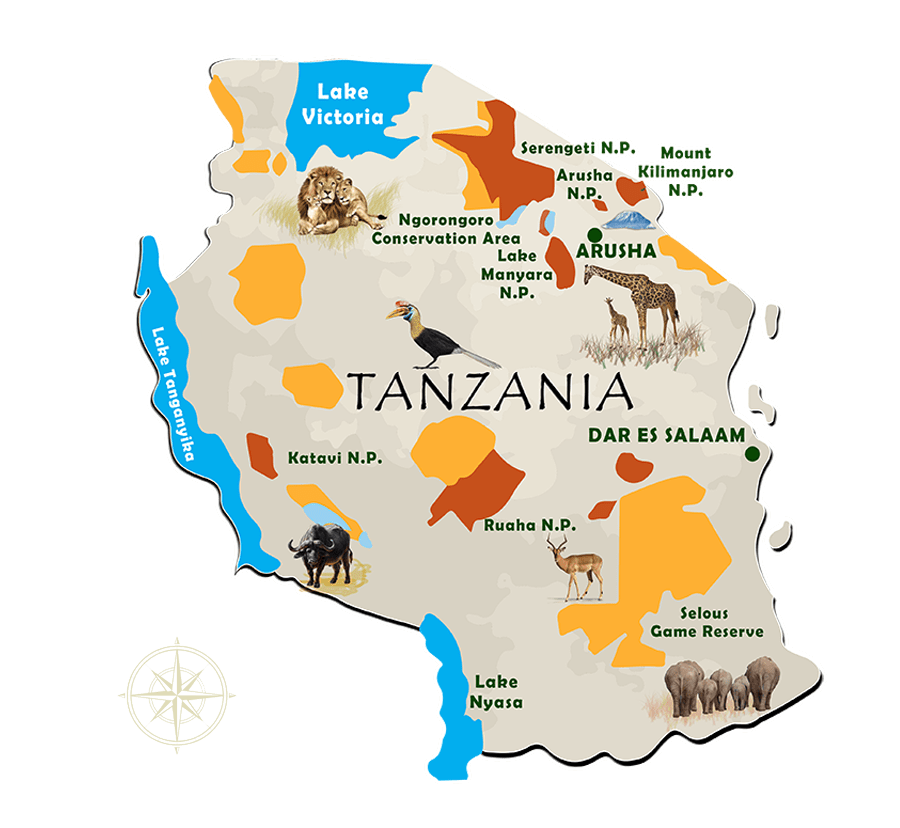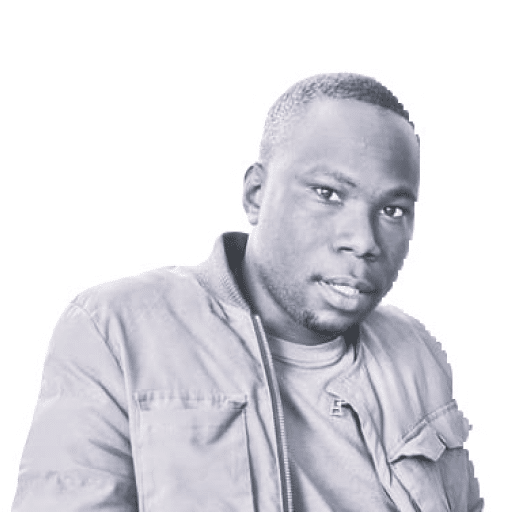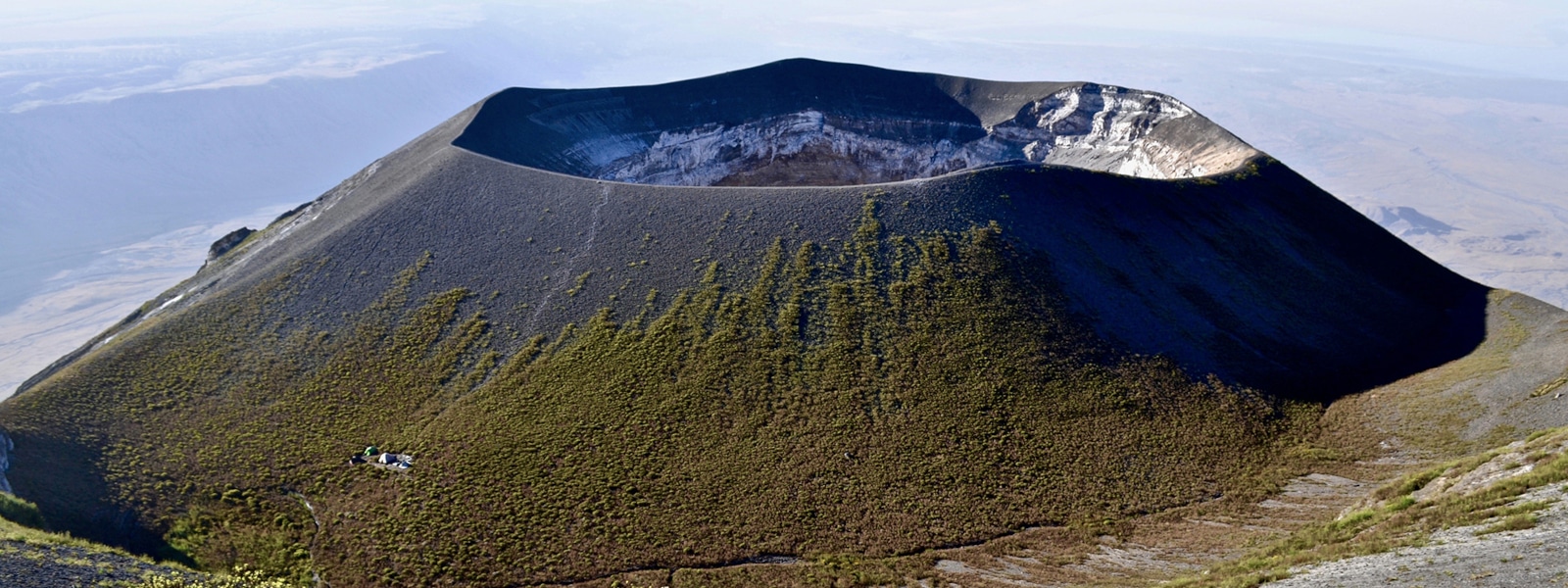
Northern Tanzania

2,878 meters (9,144 feet)

Volcano and surrounding savanna

Active volcano with unique natrocarbonatite lavaExperience a Mount Ol Doinyo Lengai adventure
Mount Ol Doinyo Lengai, known as the “Mountain of God” by the Maasai people, is a captivating destination in Tanzania. This active volcano offers visitors a rare opportunity to witness the eruption of natrocarbonatite lava, which is unlike any other lava found on Earth. Each year, adventurers flock to this extraordinary site to explore its volcanic landscapes and experience its unique geological features.
The mountain rises to an impressive 2,878 meters (9,144 feet), offering panoramic views of the surrounding Ngorongoro Conservation Area. The landscape around Mount Ol Doinyo Lengai is defined by barren volcanic terrain, ash plains, and sparse vegetation, creating a stark yet beautiful contrast with the lush forests and savannahs of nearby areas. Visitors can enjoy stunning vistas of this expansive region, which is rich in geological history and natural beauty.
Mount Ol Doinyo Lengai is an active volcano, and its eruptions are a unique feature of the landscape. The volcano’s natrocarbonatite lava is significantly cooler than typical lava, creating striking black and white patterns on the ground as it cools. This feature makes the volcano a fascinating destination for those interested in geology and volcanic activity. The mountain’s frequent eruptions offer visitors a rare glimpse into the dynamic forces of nature at work.
The area around Mount Ol Doinyo Lengai is a blend of volcanic rock and savannah, with sparse vegetation that contrasts with the lush ecosystems of nearby regions like the Ngorongoro Crater. Despite its arid appearance, the area is home to various wildlife, including zebra, wildebeest, and the occasional elephant. These animals thrive in the surrounding landscapes, making the area an exciting destination for wildlife enthusiasts as well.
The best time to visit Mount Ol Doinyo Lengai is during the dry months of June to October, when the weather is cooler, and the chances of an eruption are higher. This period offers optimal conditions for trekking the volcano and exploring the surrounding areas.
The most distinctive feature of Mount Ol Doinyo Lengai is its active status and the rare natrocarbonatite lava that flows from it. This volcano is the only one of its kind in the world, making it an exceptional destination for those seeking an unforgettable adventure. Visitors can hike to the summit, experience the unique landscape, and even witness volcanic activity up close.
For me, Mount Ol Doinyo Lengai offers one of Tanzania’s most thrilling and distinctive adventures. As an active volcano in the Great Rift Valley, its dramatic landscapes and geothermal activity make it a paradise for nature lovers and adventure seekers. The mountain’s raw beauty, set against the vast African plains, provides an unforgettable backdrop for exploration. One of my most memorable moments was hiking to the summit, feeling the heat from the volcanic lava and witnessing stunning views of the surrounding terrain.

Travel Designer

However, we’ll plan your safari around your interests, tastes, and preferences. In addition, we provide honest advice based on first-hand knowledge. Moreover, our goal is to ensure that every aspect of your journey reflects what you truly enjoy. Therefore, you can expect a customized experience that caters specifically to your desires. Furthermore, our expertise will guide you in making the most informed decisions. Ultimately, this approach guarantees a memorable and fulfilling travel experience, ensuring exceptional service, personalized attention, and unique opportunities for adventure.

However, our expert guides and brilliant concierges are hand-picked for their ability to bring your destination to life with care and passion. Furthermore, their extensive knowledge and enthusiasm ensure that every moment of your journey is enriched with local insights. Moreover, they are dedicated to providing an exceptional experience tailored to your preferences. As a result, you can fully immerse yourself in the destination and enjoy a truly unique adventure. Ultimately, their commitment transforms your trip into an unforgettable exploration of the world.

But, we seek out unforgettable experiences that benefit both local communities and the environment. By doing so, we ensure that your adventures not only create lasting memories but also positively impact the places you visit. Additionally, our focus on sustainability and community support helps preserve the natural beauty and cultural heritage of the destinations. Ultimately, this approach allows you to enjoy your journey while contributing to the well-being of both people and the planet, ensuring sustainability, cultural respect, and environmental preservation throughout your travels.
Hence, get inspired by our example trips, and then reach out to plan your adventure. Whether you have specific desires or need guidance, our team of expert travel designers is ready to help. Additionally, we tailor each trip to meet your unique interests and preferences. Therefore, you can be assured of a personalized and exceptional travel experience. Ultimately, we are here to make your dream journey a reality.
Therefore, whatever you want from your tours, our team of expert travel designers are ready to help.

Home Made For You Highlights Where to stay Trip inspiration Where to go When to visit Inspiration Location Area 988 km² Ecosystem Coral Reefs Unique Feature Spice Farms Experience a Tropical Escape on Pemba Island…
All Destination Mount Kilimanjaro Climbing National Parks,Mountain Range 1668 km² Northern Circuit, Kilimanjaro Book OverView Highlights Activities FAQ Safari Packages Parks Nearby Mount Kilimanjaro National Park National Parks,Mountain Range 1668 km² Northern Circuit, Kilimanjaro Mount…
All you need to know about Kilimanjaro National Park Reading time: 6 minutes Oct 16, 2024 A Treasured Landmark The Park is one of Tanzania’s most treasured landmarks and a top destination for visitors. Discover…
Home Made For You Highlights Where to stay Trip inspiration Where to go When to visit Inspiration Location Area 70 meters (approx.) Ecosystem Lush Tropical Forest Unique Feature Coffee Tours Nearby Experience a Refreshing Adventure…
Home Made For You Highlights Where to stay Trip inspiration Where to go When to visit Inspiration Location Area 1,510 km² Ecosystem Savanna and riverine forests Unique Feature The Great Migration Experience a Thrilling Safari…
Where History Meets Exotic Beaches Welcome to Sun, Sand and Spice Zanzibar Island: A Tropical Sanctuary Nestled off Tanzania’s coast in the warm waters of the Indian Ocean, Zanzibar Island provides an unparalleled experience for…
Home Made For You Highlights Where to stay Trip inspiration Where to go When to visit Inspiration Location Area 1,990 km² Ecosystem Montane and tropical rainforests Unique Feature Stunning waterfalls, including the Sanje Falls Experience…
The Land of 1000’s of Elephants Welcome to Home to the Elephants Tarangire National Park is renowned for its majestic Baobab trees, which can grow to an enormous size and boast a unique, iconic shape….
Home Made For You Highlights Where to stay Trip inspiration Where to go When to visit Inspiration Location Area 1,100 km² Ecosystem Coastal and Savannah Unique Feature Beach and Wildlife Combination Experience a Thrilling Safari…
Home Made For You Highlights Where to stay Trip inspiration Where to go When to visit Inspiration Location Area 456 km² Ecosystem Forest and Lake Shore Unique Feature boat safaris and primate sightings. Experience a…
Home Made For You Highlights Where to stay Trip inspiration Where to go When to visit Inspiration Location Area 14 km² Ecosystem Coastal and mangrove forests Unique Feature Historical Swahili architecture and pristine beaches Experience…
Home Made For You Highlights Where to stay Trip inspiration Where to go When to visit Inspiration Location Area 30,893 km² Ecosystem Miombo woodlands, savanna, rivers Unique Feature The Rufiji River and boat safaris Experience…








The best time to visit Mount Ol Doinyo Lengai is during the dry season, from June to October. This period offers the most favorable conditions for hiking and exploring the area, with clear skies and moderate temperatures. The trails are more accessible, and you’ll be able to fully enjoy the stunning views of the volcanic landscape.
However, the green season, from November to April, offers a different experience with lush vegetation and fewer visitors. While the trails can be wetter and more challenging, this season provides an opportunity to witness the mountain’s beauty in full bloom, with a rich variety of flora and a quieter atmosphere.
Ultimately, the best time to visit depends on your preference for weather conditions and the type of adventure you’re seeking.

June-October

November to April
Whatever you want from your adventure in the Tanzania, our team of expert travel designers are ready to help


Therefore, when you book a safari in today’s world, there is much to consider. However, with the right advice and expert planning, you can confidently approach your travel arrangements. Additionally, our experienced team is here to provide guidance. In other words, we ensure that every detail is handled smoothly.
Moreover, if you book to travel with us, your plans are impacted by circumstances beyond your control, then we understand that flexibility is essential. Consequently, we offer options to adjust your reservation or cancel it. As a result, you will receive full credit for future travel expenses. Thus, you can plan your next adventure without worry.